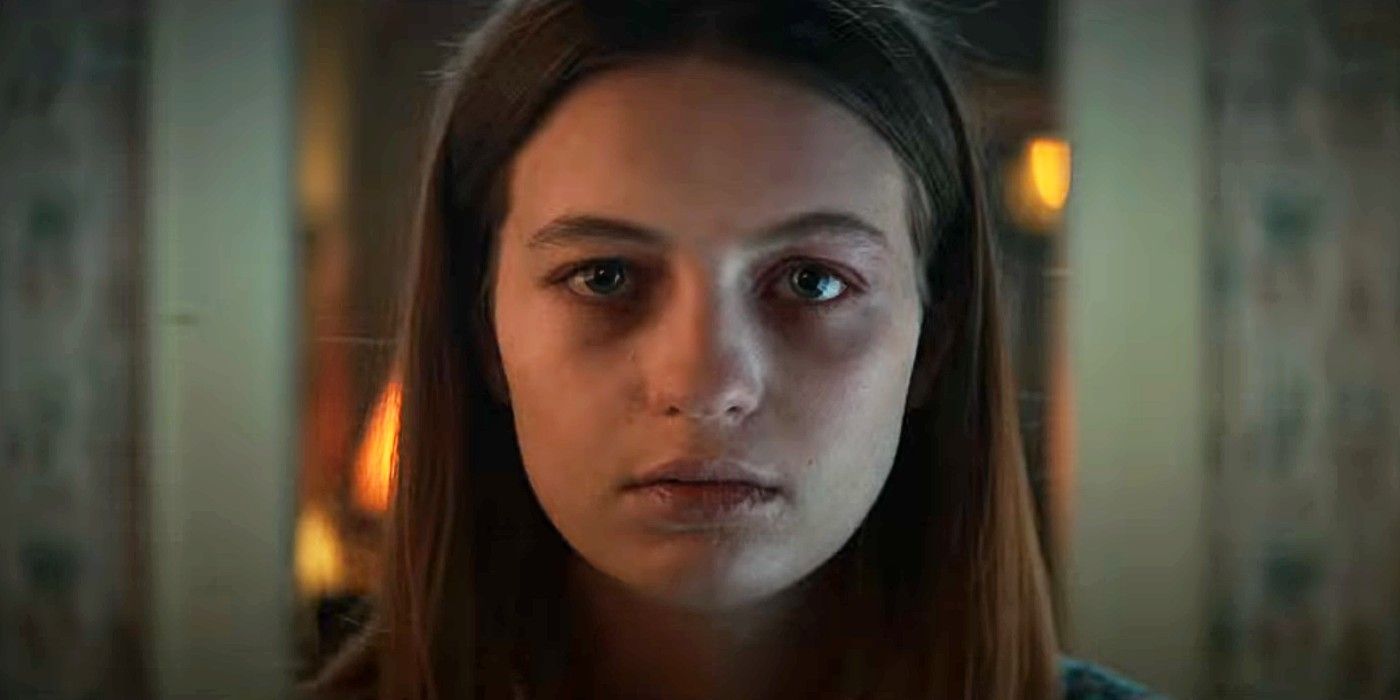The Fear Street Trilogy dominates Netflix this month, with Part 1: 1994 premiering on July 2, Part 2: 1978 continuing the tale on July 9, and Part 3: 1666 closing out the story on July 16. All three films share a connective thread of characters uncovering the root of an evil that has haunted their town for centuries, but the heroes aren’t who one would always expect in a slasher.
Writer and director Leigh Janiak shared her vision for the series of films with Screen Rant, and explained some of the swerves from and homages to classic horror movies in her work.
Each of these Fear Street movies taps into the tone of the horror movies that were popular at the time, but they continue to tell this brilliantly connected story. Can you talk to me about the challenges of keeping the story moving forward as the tones and eras shift?
Leigh Janiak: Yeah, it was challenging. Thank you for noticing that. It was complicated. It was cool, because it was so exciting and invigorating to be able to look at the great horror movies of the 90s - slashers specifically. Same thing with the 70s, and to then go into a much different tonal space for the third movie.
But the challenge was exactly that: it was how do we keep these feeling satisfying and like their own movie. You're introducing conflict and tension, and you're resolving it, but then you're keeping us driving forward. That was the main central question that we came to, especially knowing that the intention was to release them very close.
We landed on this hybrid of movies and what is traditionally television. Each movie kind of feels like the end of a TV season. And ultimately, I think the real answer lies with the characters. Making us feel like we're invested in this character relationship, the world of these characters, and wanting them to drive forward and learn more about what's happening and win.

Which works so well in in Part 3: 1666, because you already care so deeply about some of these characters that are there. Systemic oppression is a theme throughout the three films. How is that explored through Shadyside and Sunnyvale, and the history of the town?
Leigh Janiak: Yeah. The whole thing of why I felt like it was okay and cool to make these Fear Street books is because I thought that we could do something new that hadn't necessarily been done in slashers before. And that all lies in letting people have their moment that usually die very quickly.
You're not surviving past the first act if you're black, or if you're queer, or if you're Asian in traditional horror movies. And to me, it was this opportunity to tell this story of Shadyside that had been the story of the haves and the have-nots. Everyone in Shadyside has been marginalized and told that they're other for centuries, to the point where they believe it and that there's no way out. That was really exciting.
It was exciting to be able to tell that story and say, "Yes, history is told by those that win. But we can still rewrite it, and tell the truth." That was kind of the underlying thing.
Sam and Deena's relationship is really the driving force in the first film. What did Olivia and Kiana bring to the roles that wasn't on the page?
Leigh Janiak: The funny thing about both Olivia and Kiana is that they have these elements of Sam and Dena that you wouldn't necessarily find in any actress off the street.
I think like one of the great things about Olivia and Sam is that Olivia is weird. She looks like that classic blonde, white cheerleader - but she's a weirdo. And that nuance spills through with Sam, who is trying to be this thing that she's not. She has this weird inner life happening, and she's just trying to keep it down. I think that Olivia really brought that energy in a way that I think is amazing, and she kind of lifts Sam up.
Kiana is just next level. Her confidence and kickass alpha vibe? The way that she's able to do that and still make us always love Deena and root for her is just incredible. It's stuff that you hope for, but until you have actresses like that, you don't know what's going to happen.
Fear Street Part One: 1994 and Fear Street Part Two: 1978 are now streaming on Netflix.
from ScreenRant - Feed https://ift.tt/3hRULQP
 Reviewed by Riyad
on
July 09, 2021
Rating:
Reviewed by Riyad
on
July 09, 2021
Rating:

No comments: